The Pacific Ocean is big. So big, in fact, that it's the world's largest ocean and covers nearly a third of its surface. Formed over hundreds of millions of years, this vast body of water is filled with creatures great and small, from the tiny critters that surf in the ocean's channels to the migrating mammals who seek cooler waters and a spot of socialising. While its name may mean 'peaceful', it's also the origin of some serious volcanic and weather-based activity. So if you're ready to learn a thing or two (or ten, to be precise) about the world's largest ocean, then read on for our top ten facts on the Pacific Ocean.
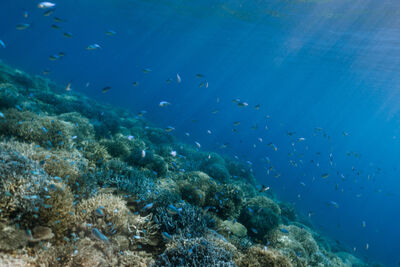
1. The Pacific Ocean stretches from Costa Rica to China
Let's start our Pacific Ocean fact file by finding it on the map. The Pacific Ocean lies between Asia and Australia to the west - covering areas such as Palau, China and Indonesia - and North and South America to the east. It stretches from the Arctic Ocean in the north all the way to the Southern Ocean near Antarctica in the south, with countries such as Canada, Costa Rica and Chile all bordered by this huge expanse.
2. The Pacific Ocean covers 30% of the Earth
As we said, the Pacific Ocean extends from Asia to the Americas, stretching 60 million square miles. It covers more than 30% of the Earth's surface and holds more than half of the Earth's ocean water. The widest point of the Pacific Ocean spans from Indonesia to Colombia and stretches over 12,000 miles - that's more than five times the diameter of the moon. And it's deep: the average depth of the Pacific Ocean is around 4,000 meters, but more on the deepest point later…
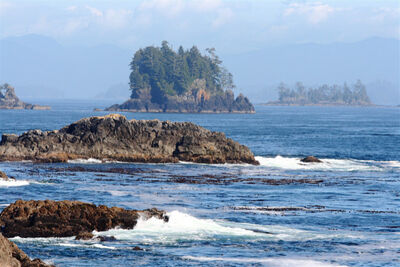
3. It was once nicknamed 'the peaceful sea'
For a poetic Pacific Ocean fact, let's dive into the origin of its name. In 1520, as part of an expedition to circumnavigate the globe for the first time, an explorer called Ferdinand Magellan had sailed through some treacherous waters before coming across some calmness in a part of the ocean. As a result, he named this ocean Mar Pacifico, meaning 'peaceful sea'. But the Pacific Ocean has gone by several other names in its time. The Polynesians call it Moana, meaning deep ocean, and the Pacific Northwest tribes had names such as Whulge and Klaskish.
4. It contains more than 75% of the world's volcanoes
Despite its peaceful name, the Pacific Ocean is home to the Pacific Ring of Fire, a belt of intense volcanic and earthquake activity that forms a horseshoe around the ocean's basin. This area is one of the most geologically active places on Earth, containing more than 75% of the world's volcanoes and produces more than 90% of global earthquakes.
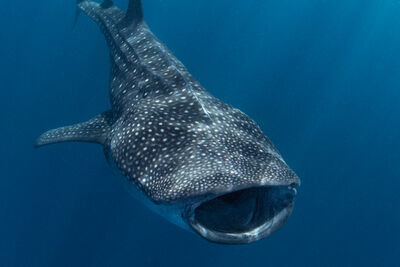
5. Many marine species migrate across the Pacific Ocean each year
The Pacific Ocean is home to so many species that we love to spy while diving, and we could dedicate a whole blog on our favourite Pacific Ocean creatures, but for now let's highlight some of the migrating marvels that swim across this body of water. Leatherback sea turtles travel over 10,000 miles between Indonesia and North America's west coast. Meanwhile, the speedy Pacific bluefin tuna swims 5,000 miles from Japan to California to spawn.
Some big ocean dwellers annually amble across thousands of miles of the Pacific, such as baleen, humpback and gray whales, who migrate up to 14,000 miles each year to breed in warm waters and then feed in the colder seas. And of course, one of our favourites, the whale shark - the gentle giant of the sea - also enjoys long migrations including routes between areas like the Galapagos Islands and Western Australia or Indonesia.
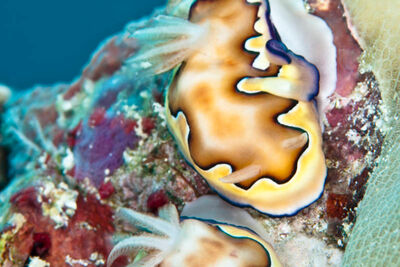
6. The Pacific Ocean is home to some tiny critters
We've talked about some of the big boys of the Pacific Ocean, but what about the miniature marvels? There are some truly tiny but vital creatures such as copepods and marine worms - tiny crustaceans and invertebrates that are less than one millimetre and form the base of the ocean's food chain. Slightly larger, we have the secretive Satomi pygmy seahorse that measures up to half an inch and lives in the coral reefs of the Western Pacific. And don't forget those tiny colourful nudibranchs found in Raja Ampat in Indonesia. Of course there is also one of the smallest fish in the ocean, the stout floater fish, who comes in at just eight millimetres and can be found around the Great Barrier Reef.
7. The Pacific Ocean produces powerful hurricanes
The Pacific Ocean is a breeding ground for more than just animals, it also produces some of the world's most powerful hurricanes. These storms form when warm ocean water heats the air, causing it to rise and create a low-pressure system. As more moist air rushes in and spins, due to the Earth's rotation, a massive storm can form and then travel across the surface.
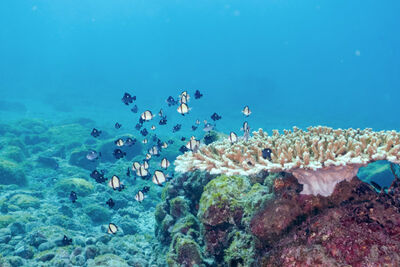
8. The deepest point on Earth is in the Pacific Ocean
We said that we would come back to the depth of the ocean, and so here we are. The deepest part of the Pacific Ocean is in the Mariana Trench, located east of the Philippines. Not only is this the deepest part of the Pacific Ocean, it's also the deepest point on Earth. Here is Challenger Deep, one of the least explored places on Earth, which plunges to depths of 11,000 meters. That's deeper than Mount Everest is tall.
9. The Great Pacific Garbage Patch is the size of Texas
For a slightly sadder, but crucially important fact about the Pacific Ocean, we have to talk about the Great Pacific Garbage Patch. This is a massive area of floating debris located between Hawaii and California. And when we say massive, we mean larger than the size of Texas. Plastic waste that enters the Pacific Ocean, coming from beaches, rivers and ships, is pulled together by powerful ocean currents, called gyres, that slowly move this waste around the Pacific. The currents pull the trash into a central area, forming the Great Pacific Garbage Patch. Most of the plastics here are microplastics and a large portion of the pollution comes from abandoned fishing gear. These become known as 'ghost nets', which marine animals get entangled in and struggle to break free from.
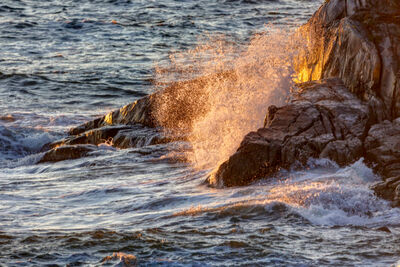
10. The Pacific Ocean is shrinking
The Pacific Ocean is shrinking by about one inch per year. This is due to the tectonic plate movement, where the ocean floor is slowly being pushed beneath continental plates - a process called subduction. A fun note to end our Pacific Ocean fact file on is that scientists predict that in a million years this movement will eventually lead to a new supercontinent, where North America and Asia will come together and close the Pacific.
















